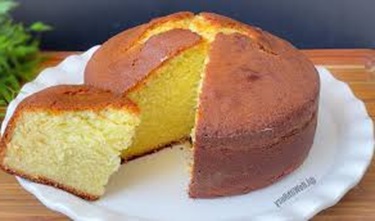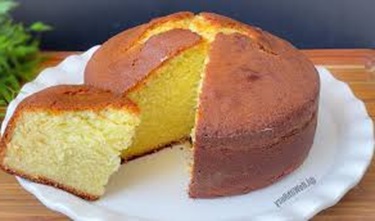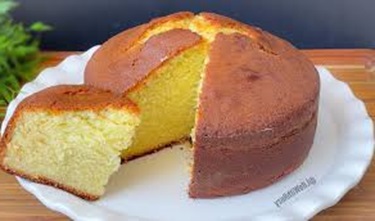How to Make Nigerian Cake
How to Make Nigerian Cake
Nigerian cake is a rich, buttery, and deliciously simple cake that is loved by many.

Unlike cakes loaded with whipped cream, chocolate, or heavy frostings, Nigerian cakes stand out for its dense yet moist texture and balanced sweetness.
It is a staple at Nigerian weddings, birthdays, and other celebrations, and it is also great for casual snacking.
Whether you are looking to bake a Nigeria wedding cake, a birthday cake for your kids, or a simple treat to store in your freezer, the Nigeria cakes recipe outlined below provides the perfect foundation.
You can always add a personal twist to make it uniquely yours—but be careful not to stray too far from the traditional recipe to maintain its classic taste and texture.
Ingredients for Nigerian Cake
The following Nigerian Cakes Ingredient measurements are for a cake baked in a 10-inch diameter and 2.5-inch deep cake pan.
- 4 cups (500g) all-purpose flour
- 12 eggs
- 4 sticks (500g) unsalted butter (NOT margarine)
- 400g (2 cups) granulated sugar
- 3 teaspoons baking powder
- 3 tablespoons vanilla extract
- 1/2 cup brandy (for preservation and flavor enhancement)

Essential Baking Tools (Tools you’ll need to bake a Nigerian Cake)
To successfully bake a Nigerian cake, you’ll need the following tools:
- An oven with both top and bottom heating capability
- Cake mixer (hand or stand mixer)
- Kitchen scale
- Sieve or sifter
- Egg whisk
- Mixing bowls
- Spatulas
- 10-inch cake pan (2.5 inches deep)
Understanding the Ingredients (More information about the Nigerian Cake Ingredients)
Flour
Use plain all-purpose flour. Avoid self-rising flour, as the pre-added leavening agents can interfere with the recipe’s balance. Using plain flour allows you to control the amount of baking powder added.
Butter
For a true Nigerian cake, always use baking butter, not margarine. In Nigeria, baking butter is readily available in stores that sell baking supplies. If using stick butter in the US or elsewhere, check the weight and ensure it totals 500g. Do not melt the butter; instead, bring it to room temperature before use.
Sugar
If your granulated sugar is coarse, grind it slightly in a dry mill to reduce grain size. This will help shorten the creaming time and yield a smoother cake texture.
Flavoring
Vanilla extract is the standard choice for Nigerian cake. However, you can replace it with other flavors like butterscotch, coconut, or almond extract to suit your preference.
Dry Fruits
For those making a wedding cake, adding dried fruits soaked in brandy for at least a week (or up to a month) is traditional. This enhances flavor and helps preserve the cake.
Brandy
Brandy serves as a natural preservative. It prevents spoilage, especially for cakes that will sit out before decoration. However, if you plan to store the cake in the freezer immediately, you can skip the brandy.
Preparing to Bake the Nigerian Cake
- Ensure all baking tools and utensils are clean and dry.
- Check that you have all the necessary ingredients.
- Preheat the oven to 150°C (302°F) and set it to the up-and-down heating mode.
- Grease the cake pan with butter, dust it with flour, and set it aside.
Step-by-Step Guide to Making Nigerian Cake
Step 1: Creaming Butter and Sugar
- Place the butter and sugar in a mixer.
- Cream on high speed until the mixture is pale, fluffy, and soft. This can take up to 1 hour, depending on your mixer. If using a hand mixer, take breaks to avoid overheating.
Step 2: Beating the Eggs
- Crack all 12 eggs into a bowl and whisk until well blended.
- Slowly add the whisked eggs to the creamed butter and sugar mixture while mixing on low speed.
3: Adding Flavors and Mix-ins
- Add the vanilla extract and brandy (if using).
- If including soaked dry fruits, fold them in gently.
- Stir well with a wooden spatula.
Step 4: Incorporating the Flour
- Mix baking powder into the all-purpose flour.
- Sift the flour to remove lumps.
- Gradually add the flour to the wet mixture in small portions, folding it in gently using a wooden spatula.
- Stir in one direction to prevent air pockets from forming in the cake batter.
Step 5: Pouring into the Cake Pan
- Pour the batter into the greased cake pan.
- Tap the pan gently on a flat surface to remove air bubbles.
6: Baking the Cake
- Place the cake in the preheated oven.
- Bake for at least 2 hours before opening the oven door to check.
- To test for doneness, insert a knife or wooden skewer into the center of the cake. If it comes out clean, the cake is done.
- Press lightly on the cake’s surface—if it springs back, it is fully baked.
Step 7: Cooling and Storing the Cakes Nigerian
- Allow the cake to cool in the pan for 5 minutes before removing it.
- Let it cool completely on a wire rack before decorating or slicing.
- Store in an airtight container or freeze for later consumption.
Serving Cake Nigeria
- Serve as a snack with a chilled drink.
- Decorate for birthdays or weddings.
- Enjoy as a dessert after meals.

Cake Nigerian is a timeless delight that is both simple and flavorful. Follow this guide carefully, and you can create soft, rich, and delicious cakes Nigeria perfect for any occasion!


